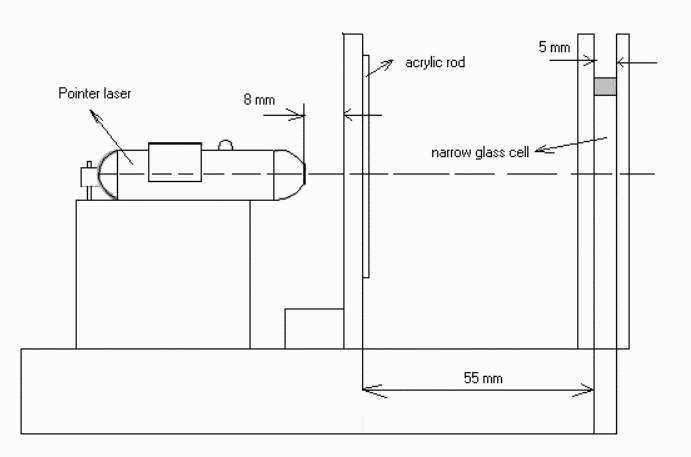
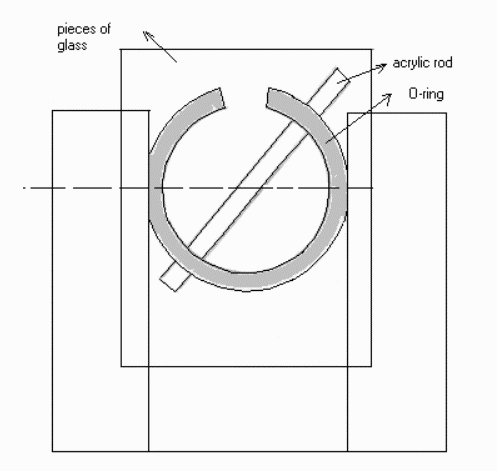
Low Cost Apparatus
Apparatus Title: Apparatus for determination of diffusion coefficient by refringence variation
Abstract : It consists of a pointer laser which light impinges on a cylindrical lens. The lens forms 45° with the horizontal. The light coming from the lens, impinges perpendicularly on a glass cell which contents two liquids of different concentration in contact. The diffusion coefficient can be obtained from the time height image change of the light coming from the laser.
Equipment required to construct apparatus:
Sketch of the apparatus


Description
Here we describe a simple physico-chemical system which allows to obtain the diffusion coefficient from the analyses of the deviation of the laser light. The elements are disposed on wooden supports as it is shown in the sketch.
The narrow cell is built with two pieces of glass glued to an O-ring in such a way that the resulting cell is about 5mm wide. The light from the pointer laser impinges on the cylindrical lens (acrylic rod), which forms 45° with the horizontal.
The light coming from the lens, impinges perpendicularly on the glass cell which contents two liquids of different concentration in contact. The image is collected on a screen which is about 2 meters far from the cell. The image changes with the time. The diffusion coefficient can be obtained from the time height image change of the light coming from the laser.
The law that governs the diffusion phenomenon are fundamental for the description of cells, chemical reactions, etc. If two liquids of different concentration are in contact, a molecule or ion migration from one liquid to the other through the interface will be produced until the difference of concentration be null. This behavior can be described by Fick´s laws. The first Fick´s law expresses:
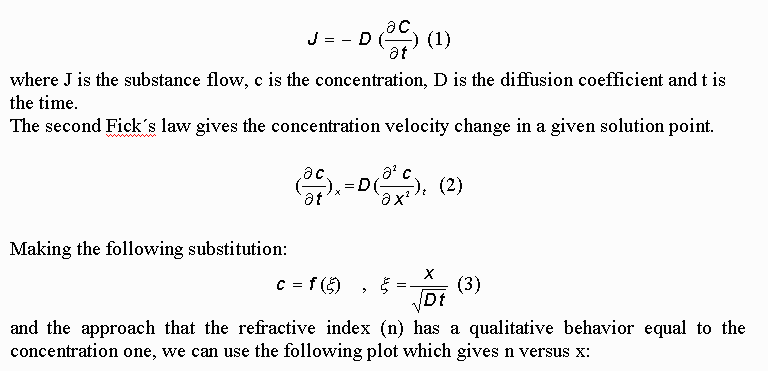
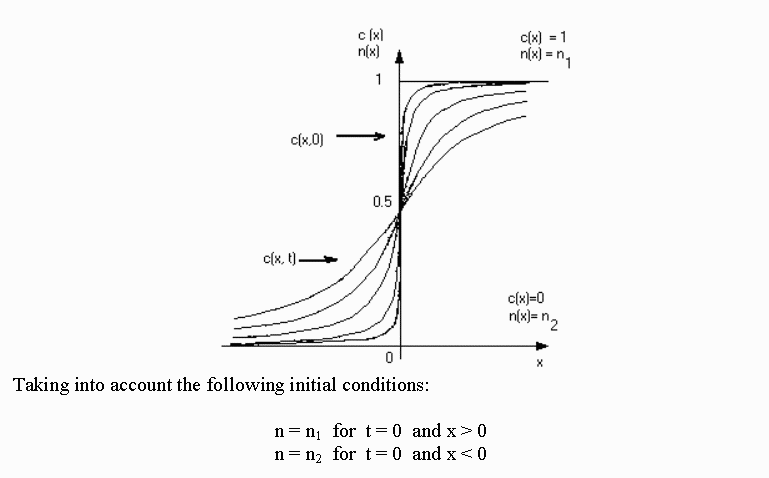

When a light ray impinges in a medium where there is a refraction index gradient the ray curves in the gradient direction. The following plot shows how the light coming from a ray laser curves when passes through the cell where the refraction index varies.
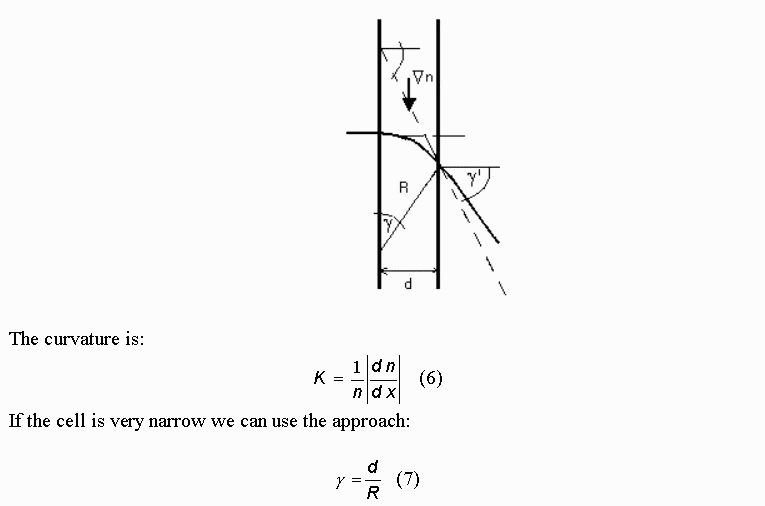
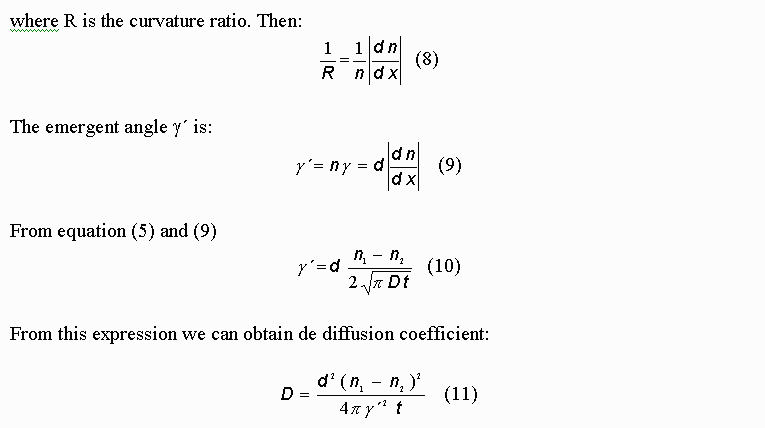
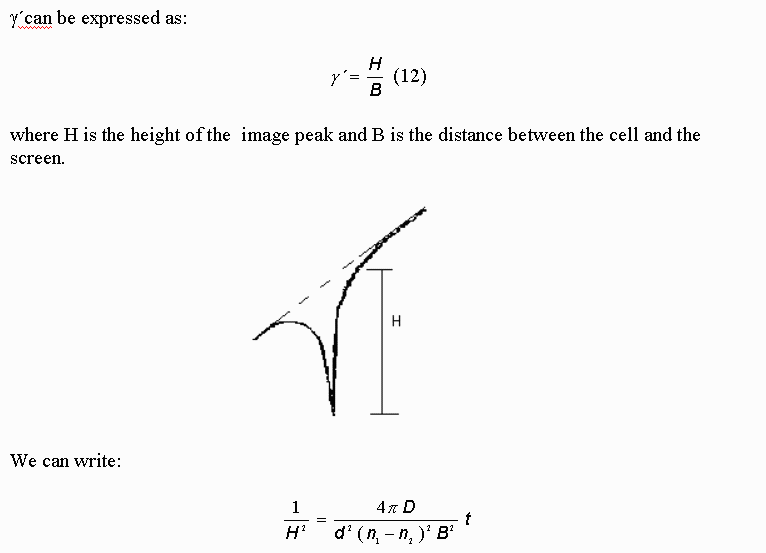
From this expression it is possible to obtain D by plotting 1/H^2 versus t.